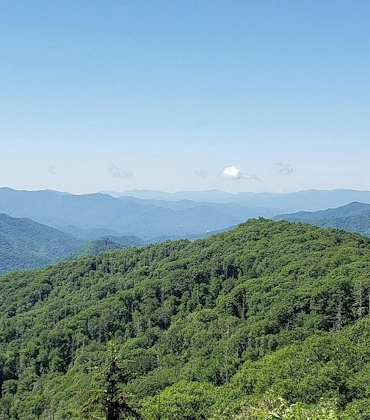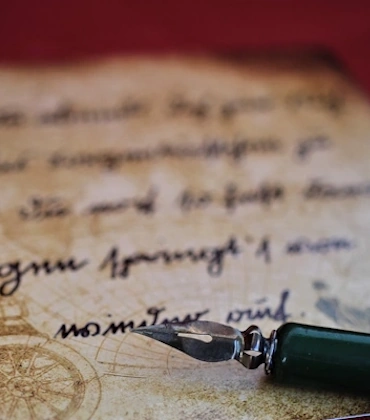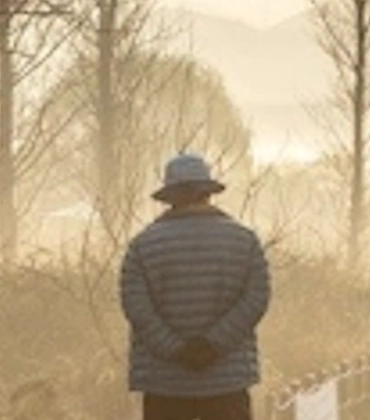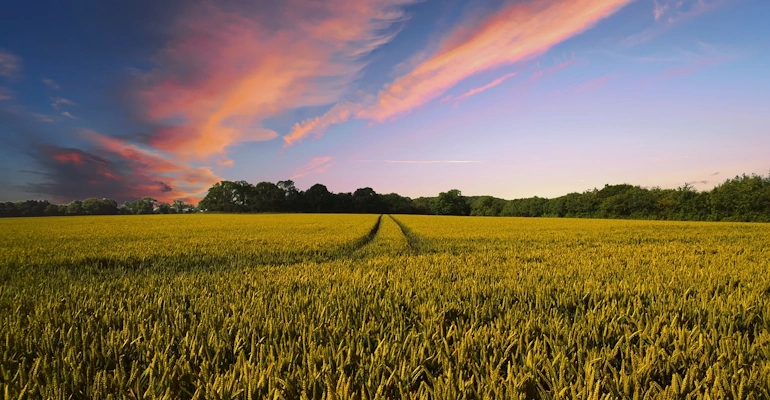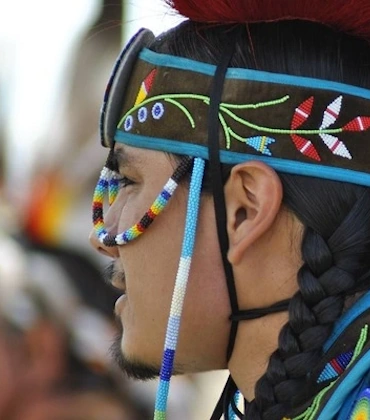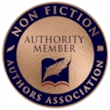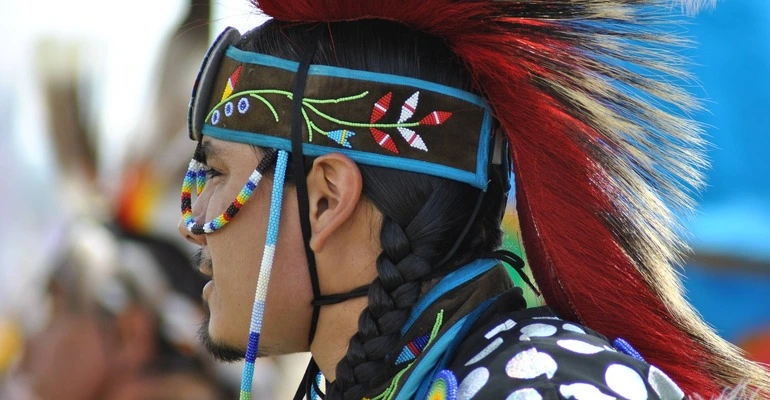
Sequoyah the son of a Virginian
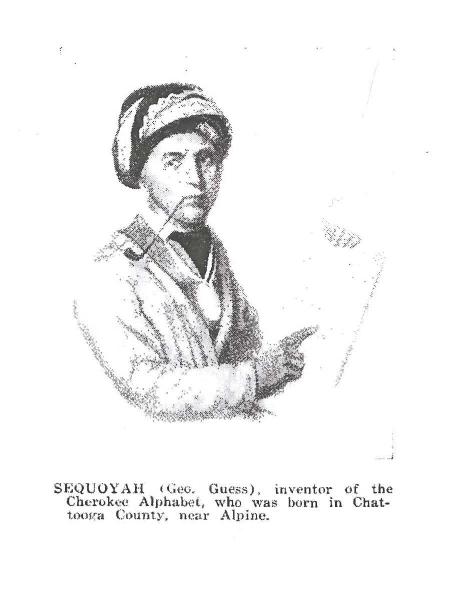 (public domain)
SEQUOYAH: (GEORGE GIST/GUESS)
(ca. 1778–1843)
(public domain)
SEQUOYAH: (GEORGE GIST/GUESS)
(ca. 1778–1843)
In the capitol building in Washington, D.C. bronze statue of a Cherokee man named Sequoyah is on display. The state of Oklahoma presented the statue, sculpted by female artist Vinnie Ream to the National Statuary Hall Collection in 1917. It was the first sculpture included in that collection to honor a Native American. Another likeness of Sequoyah, which was created by architectural sculptor Lee Lawrie, appears on the bronze doors of the John Adams Building at the Library of Congress (Lawrie, Lee,Sculpture - 48 Plates With a Foreword by the Sculptor, Cleveland, Ohio: J.H. Hanson 1936). A bust of Sequoyah, created by artist Griffin Chiles (1925-2009), is on display in Tennessee's McClung Museum as well as in the State Capitol in Nashville. Why was this Native American honored in these ways? Sequoyah was the son of a Virginian and a Cherokee woman from a prominent tribal family. Sequoyah also became a linguist by developing a system that allowed his people to write in their own language. He was a man of many talents: a silversmith, blacksmith, soldier, inventor, linguist, and tribal leader. He is best known for the syllabary he created.
What prompted a Cherokee to experiment with his native language? Why would a man devote years to experimenting with ways to write in his language while ignoring his family responsibilities and putting up with his wife's tirades. Even his neighbors urged him to get on with life and abandon his obsession with sounds and syllables. Told that he was wasting his life and ignoring his family and having his work destroyed did not squelch his on-going experiments. Sequoyah had grown envious of the white man's ability to read and write. To him, such an accomplishment seemed like magic. How was it possible to send a message on paper that could be read and understood by another person without spoken words? That the same message could be understood after days, months, or years passed astonished him. He marveled that the white man's writing allowed words to reach out, cross boundaries, and even touch the future.
The practice of looking down on Native Americans and holding "half-breeds" up to scorn received a blow when a Cherokee achieved a major linguistic milestone: the triumph of creating a working syllabary Noted scholar and prolific author Dr. Jesse Harasta (2014),while honoring Sequoyah's legacy, points out that Sequoyah was not the only person to create a syllabary. Harasta describes other syllabaries which exist among Native American tribes and, in addition, includes those on the continents of Europe, Asia, and Africa.
Exactly who was Sequoyah? He was a man of many accomplishments. Where was he born? His exact place of birth is not clear. One account claims that he was born in Alpine, Chattooga County, Georgia, and that he frequently visited the great Cherokee leader, Major Ridge, at the Ridge's estate on the Oostanaula River (Battey, 1922).However, James Mooney (1861-1921), an expert in Cherokee history, claimed Sequoyah was born in Tuskegee, Tennessee in the Overhill territory. This locality, alleged to be the site of his birth,was called "over hill" by explorers and traders since crossing the mountains was necessary in order to reach the Cherokee Nation. That area is now Tennessee's Monroe County
The exact date of Sequoyah's birth is unknown, but most likely occurred in the 1770s prior to the American Revolution. His mother was a Cherokee from a family prominent in the activities of the Tribal Council. Sequoyah's father was a Virginian named Nathaniel Gist (or Guess), a white man reported to be a close friend of George Washington (Starkey,1976/1995).Other sources describe Colonel Gist as an "associate of President George Washington and a Virginia diplomat and soldier, or a Dutch or German peddler". In fact, one report contends that Nathaniel Gist had once rescued Washington from drowning in a rushing icy river (Ehle, 1988).And he did name his son George. Colonel Gist traded with the Cherokees and from time to time represented various interests of the American military. After a few years he deserted his Cherokee family and returned to Virginia.
So Sequoyah grew up without his father's presence and was unable to speak his father's language, but he became a self-taught man (Starkey,1976/1995).Eventually Sequoyah developed a flair for hunting and delved into fur trading, which, it is said by some, led to his being permanently crippled in a hunting accident. But there are conflicting accounts that claim he was born disabled and that his name literally means "pig's foot" in Cherokee. Another record asserts that an injury while in military service resulted in his becoming physically challenged (Source Unknown)
Despite his lack of formal schooling, Sequoyah displayed a remarkable natural intelligence.As a young lad, he was praised because he was clever with his hands. For example, while still a child, Sequoyah built his mother a springhouse, which kept the water clean and prevented the food stored there from spoiling. He also created unique skimmers to remove cream from the fresh milk. Sequoyah was also an artist who made his own brushes and created paint by grinding berries and roots. He was able to sketch faces of people from an early age. Whenever he acquired paper or usable bark, Sequoyah would paint animals, especially horses.Later on,he used his talent to make silver ornaments and to do blacksmithing.Often he sketched the faces of his customers and noted their orders and the cost(Ehle, 1988/89, Starkey, 1976/1995). That became his personal method of bookkeeping.
In its record of Sequoyah, the Georgia Historical Society cites author Jane Shumate :
“He was an inventive boy and often amused himself or made his tasks easier by creating things. As a small child he made little houses of sticks in the forest, but when he was older, he constructed various milking devices for his mother and a small wooden house over a stream to keep the cows’ milk cold. He also carved animals out of wood and drew pictures of animals and people, mixing colors out of crushed bark, berries and leaves (38, 39).”
Cherokee boys, as well as some girls, received rigorous training in self-defense at about the age of fifteen. Sequoyah would have subjected himself to painful ordeals as he practiced the art of war, Cherokee style. He learned to use a tomahawk and spear, as well as a bow and arrow. He was also subjected to enduring physical pain and spending time in self isolation. Sequoyah would have begun defense training as a young teenager. He, like other Cherokee boys and some girls, acquired war skills and rigorous training. He learned to subject his body to pain while witnessing others doing the same. Patience became a virtue as he endured periods of hunger. Sequoyah was taught how to use the bow and arrow, the spear, and the tomahawk. Sitting in the woods or near a river for several days, he would listen quietly to the sound of animals and observe their behavior. Becoming a hunter required participating in tribal rituals of washing in the river, of praying, and of showing respect for the animals he killed. He undoubtedly participated in the violent ball games that were ingrained in Cherokee culture (Georgia Historical Society Online). Such training paved the way for him to become a soldier.
War came when Sequoyah was a young man, and he took part in fighting on several fronts. For example, Tecumseh, the noted Shawnee warrior and chief, did not approve of Native Americans' adopting the white man's customs. He organized tribes in the Northwest Territory to fight the whites and made a journey south to recruit Cherokee men for his troops, but the Cherokees were unwilling to join forces with him. Instead, they fought with General Andrew Jackson's army against the warriors who followed Tecumseh. Their chief, Pathkiller who earned the rank of major, led a Cherokee militia of 800 men. Sequoyah fought with Pathkiller's troops. The Cherokees captured a white man carrying papers with unusual markings, and Sequoyah once again viewed those odd symbols with curiosity (Ehle, J. 1989). He realized such marks were used to send messages, and he became even more determined to devise a way that his people could "talk" in that way.
Around 1809 he began experimenting with ways to create a similar technique for the Cherokees to communicate in their own language, but his work was interrupted by the War of 1812. He enlisted and served until 1814. Then in 1815 he married Sally Waters. As a family man, he earned a living and supported his wife and children, but he continued to work on developing a way to communicate with other tribal members by writing. Sequoyah began to devote more and more time to that project.
Although his wife, his friends, and neighbors insisted he was wasting his time, frequently taunting him and suggesting he had lost his mind, Sequoyah persisted in developing characters that could be usedby Cherokees to "speak" in their own tongue. His wife, filled with resentment because she was left to look after their family alone, destroyed all of his work in a terrible temper tantrum, and he had to start all over. To work in private and to protect his labor, he built a small cabin where he once again commenced to experiment with ways to write down the Cherokee language. Eventually he focused on the sounds of words. It took more than 12 years and a great deal of trial and error, but Sequoyah became the only man known to create an entire syllabary on his own.Once hedevised a symbol for each of the 86 sounds in the Cherokee language, it became possible for his entire tribe to become literate within a very short time. From total illiteracy to fluency in reading and writing in days was a miracle. But his tribesmen required demonstrations and proof before they agreed to practice with his "alphabet."
With the help of his daughter,Ahyoka, and other children,he convinced the tribal council that his method of writing worked(Ehle, 1988/1989).He would write a message dictated by the council and then call in his daughter to read it. Those involved in these sessions were amazed at the accuracy of the child's words, but others were slow to become convinced that Sequoyah's method worked. It took a great many ploys to convince other Cherokees that his system could be used. However, it happened. For example, Cherokees living in Arkansas and other regions to the West mastered his "alphabet" and could send messages to their family miles and miles away using Sequoyah's syllabary.Later white missionaries used his symbols to translate portions of the Bible, and the tribal newspaper, theCherokee Phoenix,was published in both English and Cherokee. In 1821 his syllabary was approved by the tribal council and adopted in 1825.
Sequoyah was honored for creating an entire syllabary‒and that list of sounds, enabled his people to read and write and opened up a highway to learning from printed material. Noted Oklahoma scholar Stanley W. Hoig called Sequoyah The Cherokee Genius (1995, Oklahoma City: Oklahoma Historical Society)and cited the Cherokee's greatest achievement as having provided to a biased world 'undeniable proof of humanism and ability."
In 1824,in appreciation for Sequoyah's achievement, the Cherokee Nation ordered that a silver medal be created for him (Starkey, 1973/1995).However, awarding the medal to him was difficult because he lived in Arkansas. Later......traveled to Arkansas and presented him with the medallion. Proudly, he wore it for the remainder of his life. He was also granted a life-time annuity of $300, which was passed on to his wife after his death. In 1828 Sequoyah moved to Oklahoma, where he became active in tribal politics, even serving as an envoy to Washington, DC. There he was much sought after, interviewed, and agreed to pose for his portrait wearing his red turban and holding his long stemmed pipe in his hand. Sequoyah, abandoned in childhood by his father, had become a celebrity
Sequoyah fell ill and died in 1843 while searching for a band of Cherokees who had moved into Mexico prior to the removal. Although the location of his grave is unknown, his memory is perpetuated in the names of two species of redwood trees. Buildings and streets also carry his name; the Oklahoma county in which he lived has been named Sequoyah County.His memory is also honored by using his name, though the spelling is different, to designate the Sequoia National Park and Sequoia National Forest in California, and Mt. Sequoyah in the Cherokee National Forest on the Tennessee-North Carolina border. Sequoyah became a true champion of learning for his people. The Cherokee Phoenix was revived in the twentieth century and is available today in both print and online versions. On the reservations in Oklahoma and in North Carolina, his syllabary continues to be prominently in use in the twenty-first century. This physically challenged son of a Virginian was a genius, who deserves on-going admiration by all.


